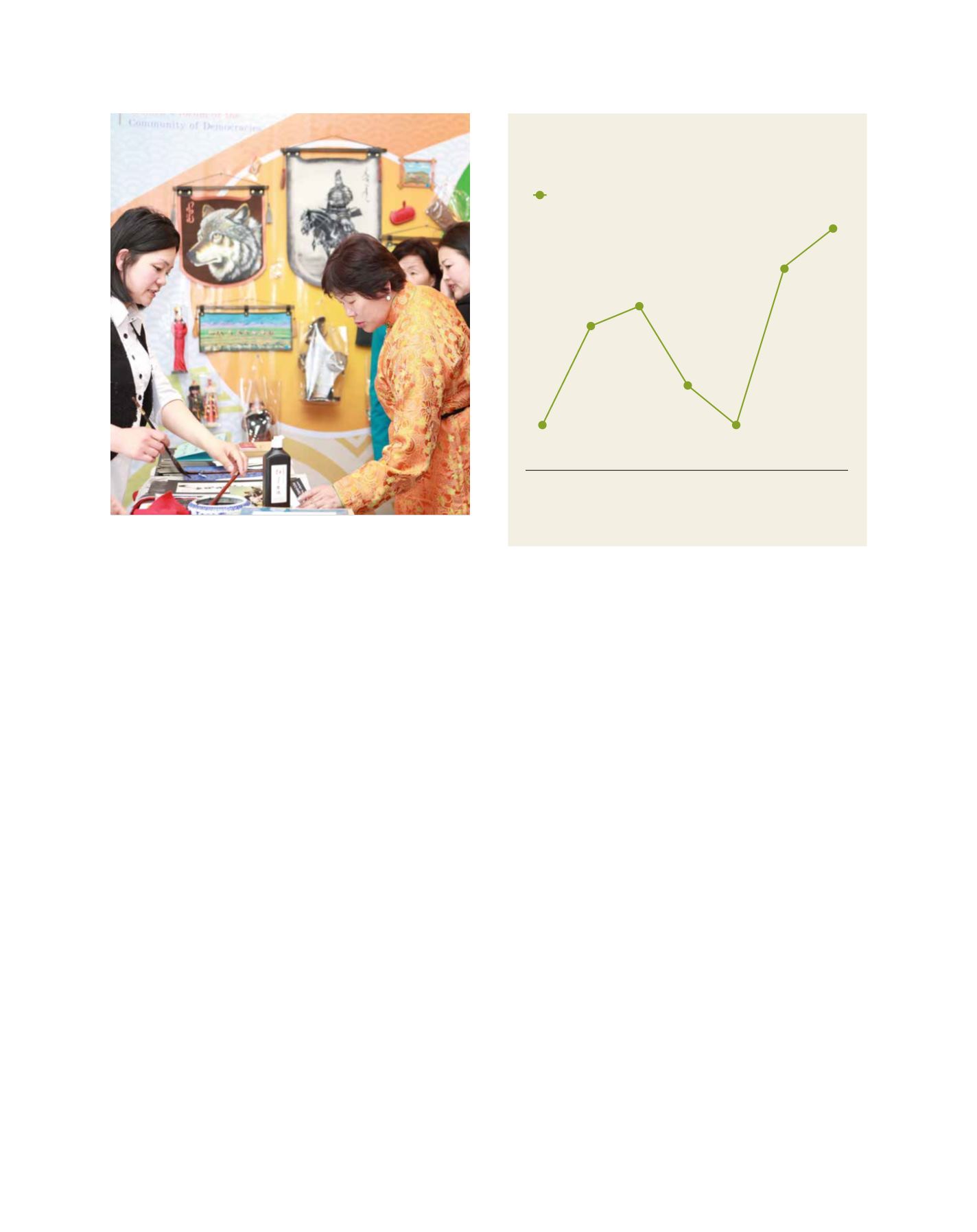

[
] 99
Notably this requires the amendment of the current Law
on Small to Medium Enterprise, to enable the development
of small and medium enterprises based on the reality in
Mongolia. This is because any sector’s restructuring requires
the setting up of a supportive legal environment as well as a
friendly system and structure.
Women’s participation in decision-making
The Government of Mongolia committed to increase women’s
participation in the decision-making process up to 30 per cent
by 2015 (Millennium Development Goal 3) but it couldn’t
achieve this mission. However, in the Parliament Election of
2014, for the first time 11 female members were elected. In
2016, 13 female members were elected to parliament.
We are often asked why women need to participate in poli-
tics. We respond that both men and women live together and
their needs are different. These different needs should be
represented differently in the laws, policies and programmes.
Only women understand women’s needs and situation.
Article 10 of the LPGE stipulated that women’s repre-
sentation in decision-making positions of central and local
public administration offices should not be less than 15-40
per cent. Efforts have been made towards establishing
a 40 per cent quota for women at the local
aimag
(prov-
ince), city and district level Hurals (parliaments). Women’s
share and participation in decision-making positions at the
aimag
,
soum
(second level administrative subdivision), city,
district and
horoo
(subdistrict) levels remain modest due to
the stereotyped and patriarchal attitudes among society. The
NCGE developed a recommendation on establishing a 30 per
cent quota for women at the election with a women’s caucus
of political parties and civil society organizations.
The recommendation was included in the revised Law
on Election just before the Parliament Election of 2016.
Unfortunately, male Members of Parliament changed the
quota from 30 per cent to 20 per cent a month before the
election. This has also happened before, in the 2008 election.
The election result shows a need to improve women’s knowl-
edge, skills and economic situation as well as journalists’ gender
sensitivity for supporting women’s political participation.
Furthermore, there is a need for concerted effort to achieve SDG
5 and to make women’s and men’s participation 50-50 by 2030.
The NCGE has learned that we need to think about a stable
system and structure for implementing existing legislation,
despite some advances in the legal environment. For instance, due
to a lack of monitoring systems on the effective implementation of
laws, the result of the long-termmovement against gender-based
violence may be diverted. In order not to go backwards from our
achievement, we need to change the attitudes of male politicians,
enact a stable policy and develop a new way of doing things.
The NCGE believes it is important, in addition to capacity-
building for women, to raise the awareness of male politicians
and decision makers as well as public attitudes on gender
equality and mainstreaming.
Furthermore, this requires the setting up of a stable system
which can run national-level training, surveys, research and public
awareness campaigns despite project support only from interna-
tional organizations, agencies and donors. Another important
issue is that of educating human resources and the next genera-
tion, in order to bring changes in society. To ensure that gender
mainstreaming is a long-term and comprehensive systematic
action, it needs towork close to people’s hearts andminds so it can
change their attitudes and stereotypes. As a result of sustainable
actions, countries will achieve the Sustainable Development Goal.
Image: NCGE
An exhibition organized by the NCGE to promote women’s small
businesses included showcasing hand-crafted manufacturing
Women’s participation in parliament has improved, but
a concerted effort is required to achieve 50-50 by 2030
Source: By year election (Election General Committee)
1992–
1996
3.94
1996–
2000
10.52
2000–
2004
11.84
2004–
2008
6.57
2008–
2012
3.94
2012–
2016
14.47
2016
17.00
Participation of women in parliament
G
ender
E
quality
and
W
omen
’
s
E
mpowerment
















